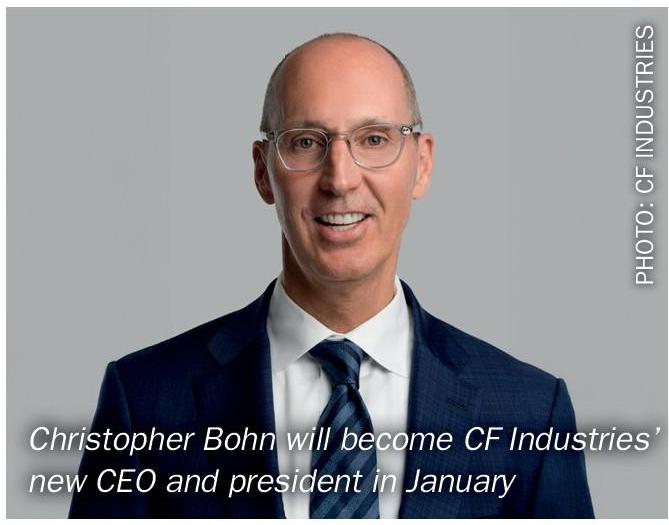Nitrogen+Syngas 398 Nov-Dec 2025

26 November 2025
2025 AIChE Ammonia Safety Symposium
CONFERENCE REPORT
2025 AIChE Ammonia Safety Symposium
Venkat Pattabathula reports on the American Institute of Chemical Engineers’ (AIChE) Safety in Ammonia Plants and Related Facilities Symposium, held from September 7–11th 2025, in Atlanta, Georgia, USA.
From September 7–11th, 2025, approximately 350 engineers representing more than 100 companies from over 30 countries attended the AIChE’s 69th Annual Ammonia Safety Symposium, held at the Atlanta Marriott Marquis in Atlanta, Georgia, USA. The event brought together global experts, engineers, and safety professionals to share insights, case studies, and innovations aimed at improving safety performance in ammonia production and handling facilities.
The Ammonia Safety Committee is committed to enhancing safety across facilities that produce ammonia and related chemicals – including urea, nitric acid, ammonium nitrate, and methanol. The primary goal of the annual symposium is to advance safety performance within the ammonia industry by fostering the exchange of insights on incidents, best practices, and technological innovations through presentations and open discussions.
Participants include plant managers, production and safety leaders, process and reliability engineers, and other professionals responsible for the safe operation of ammonia plants and handling facilities. Global experts share the latest developments in ammonia safety, present case studies, and discuss lessons learned to promote continuous improvement.
Safety excellence
The symposium’s keynote address, titled “Mastering the 5 Core Capacities for Safety Excellence,” was delivered by Shawn Gallaway, Chief Executive Officer of ProAct Safety, Inc. Shawn opened his presentation with a thought-provoking question about the three paths to achieving zero injuries and emphasised that safety excellence is founded on Insight, Mindset, Systems Confidence, and Ability. He then introduced the five core capacities essential to safety excellence: System, Leadership, Engagement, Cultural, and Strategic, and explained that these capacities form the foundation for building resilient safety cultures and driving continuous improvement.
In the segment on understanding people and performance, Shawn Gallaway highlighted five key principles. First, people will make mistakes. Second, the manner in which leadership responds to those mistakes matters greatly. Third, behaviour is shaped by contextual influences rather than by simple willpower alone. Fourth, learning from normal operations, from deliberate post-work reviews, and from incidents is vital to continuous improvement. Fifth, error-likely situations are predictable and therefore can be identified and managed proactively.
Shawn also described common motivators and demotivators for safety engagement. Typical motivators include opportunities for input, a sense of ownership, meaningful involvement, teamwork, scorekeeping, continuous improvement, healthy competition or “winning,” task variety, and recognition. Common demotivators include constant or poorly managed change, withholding of information, perceived hypocrisy or dishonesty, unfairness, unproductive activities, unhealthy internal competition, lack of follow-up, over-control, and ignoring frontline input. His central message was that aligning leadership, systems, and culture creates environments where safety is not only a stated priority but a shared organisational value.

Umberto Zardi: a lifetime of engineering innovation
The Symposium also paid tribute to the life and work of Dr Umberto Zardi (July 1929–March 2025) of Casale, a mechanical and process engineering pioneer whose ideas reshaped modern ammonia and urea production. His career combined practical engineering, bold innovation, and mentorship to generations of engineers.

Zardi’s development of the self-stripping urea technology beginning in the 1960s became an industry benchmark, enabling efficient large-scale urea plants and, by the early 2000s, single-line capacities exceeding 3,000 t/d. More than 140 urea plants were built using his original concepts, demonstrating the technology’s long-term competitiveness on both capital and operating costs. In 1979 he introduced the axial-radial ammonia converter, a design that reduced pressure drop, improved catalyst utilisation, and delivered higher yields with lower energy consumption.
Beyond new designs, Zardi championed an ammonia converter and plant revamping concept that prioritized modernisation over full replacement. This approach allowed hundreds of plants to be upgraded cost-effectively, along with large annual energy savings and across some 300 plants a multi-million-ton reduction in CO2 emissions.
A prolific innovator, Zardi registered more than 130 patents across multiple countries, and led teams at Snamprogetti and later Casale to expand technologies that made fertilizer production more efficient and sustainable. His leadership combined technical rigor with integrity and generosity, and he remained an active member and contributor to AIChE throughout his life. His legacy lives in the plants, patents, and people who continue to apply his principles of elegant, efficient engineering — a lasting influence on the fertilizer and chemical industries worldwide.
The symposium also featured a number of technical papers addressing recent safety incidents and their investigations. The key safety-related papers are summarised overleaf:
1. Ammonia leak on a marine loading arm
On February 4, 2024, at approximately 10:50 AM, a leak developed at the emergency release system (ERS) of a marine loading arm while ammonia was being loaded into the Marcella, an LPG carrier. Operators mitigated the release by reducing loading rates from 600 t/h to 300 t/h, and completed operations at the lower rate. The event was classified as a Tier 2 process safety event and was caused by failure of the double ball valve assembly, resulting in a loss of primary containment that was confined to the immediate area; no injuries were reported. Post-incident inspections revealed seal failure due to deformation of mating flanges between upstream and downstream ball valves and a crack on the external surface of the valve body. A metallurgical analysis and finite element analysis (FEA) modelling supported the investigation and identified the root cause as an overpressure scenario caused by trapped liquid ammonia within the valve assembly. A novel repair method validated through a level 3 fitness-for-service assessment was implemented; the repair process included nondestructive examinations, functional checks, and validation of integrity and performance. The repaired system has since operated reliably for more than ten months without recurrence. The investigation used a root cause incident investigation framed by the human and organisational performance (HOP) approach to identify causal factors and improvement opportunities, and it recommended enhanced pressure relief strategies, mitigation of stress corrosion cracking, and improved design and operational controls for valve assemblies, along with continued monitoring of repaired components.
2. Chloride ingress into steam system
An ammonia plant commissioned in late 2021 experienced significant operational disruption when high conductivity in outsourced water produced out-of-specification boiler feed water, which led to chloride contamination of the steam system. Early in 2023, outsourced water conductivity reached 450 μS/cm, well above the design limit of 175 μS/cm; the polished water system, designed for 0.2 μS/cm, could not meet the specification. In March 2023, two portable reverse osmosis units were rented to reduce conductivity, but their performance was inconsistent because of frequent membrane cleaning, chemical dosing, system trips, and intermittent reverse osmosis bypasses.
In August 2023, a reformer trip caused by a low steamtocarbon ratio initiated a cascade of issues, including a dry gas seal failure in the refrigeration gas compressor, partial plant operation at 70% with venting downstream of the CO2 removal section, increased polished water conductivity that raised CO slip in the high temperature shift (HTS) reactor from roughly 3.0 mol% to about 7 mol%, and failure of a highpressure steam superheater coil that led to a full plant trip. Inspections found that the HP steam superheater coil failure resulted from detached liner sleeves that plugged coils and caused flow starvation and overheating, with commissioning debris contributing to the blockage. White deposits on the HTS catalyst were confirmed to contain chlorides, indicating catalyst poisoning.
The root cause analysis identified high water conductivity in outsourced water as the primary cause, which led to chloride contamination, catalyst deactivation, corrosion and mechanical damage across steam turbines, syngas systems, refrigeration systems, and auxiliary boilers, and posed significant process safety risks. Corrective actions included upgrading water treatment by replacing the two RO units with five highcapacity osmosis units sized to 120% of plant load, and replacing resins in demineralised and polished water units; performing mechanical repairs such as installing new rotors in syngas and refrigeration turbines and replacing corroded boiler components; and implementing catalyst management measures including removal of approximately 30% of the HTS catalyst, collection of spent catalyst for analysis, and installation of a chloride guard with catalyst to prevent future poisoning. These measures successfully restored plant operation and efficiency and underscored the critical importance of water quality control, robust water treatment systems, and early detection of contamination.
3. High temperature exposure of HTS catalyst
A fresh charge of HTS catalyst was exposed to elevated inlet temperatures of 680°F (360°C) for 18 days, exceeding the recommended start-of-run range of 620–630°F (326–332°C). That prolonged exposure caused the exotherm to shift from the top to the middle of the catalyst bed and degraded catalyst performance, as shown by increased CO slip and a higher approach to equilibrium. The root cause investigation traced the problem to a refractory repair performed during the 2023 turnaround under time pressure; a bulged liner section and prior refractory loss had been known since commissioning, and the repair was compromised by limited access, catalyst dust inhibiting proper bonding, and omission of dryout procedures. After startup, detached castable refractory was carried downstream and partially blocked inlet tube ferrules, and on April 29, 2023, refractory lodged in the bypass valve seat prevented full closure and allowed uncontrolled hot gas bypass. Continued refractory carryover increased the blockage, forcing more hot gas through the bypass line and gradually raising the HTS inlet temperature to 680°F.
Corrective actions included removal of loose refractory, welding repairs to restore bypass valve sealing integrity, development of a detailed refractory repair procedure with postapplication quality checks, and implementation of a preventive maintenance regime that includes inspection of the 1101C bypass components every three years during major turnarounds, mechanical testing of valve internals, and condition monitoring of the transfer line to detect localized refractory loss. Key learnings emphasised following OEMrecommended refractory procedures including dryout protocols, ensuring bypass valve integrity through routine internal inspections, and operating the HTS reactor at the minimum practical inlet temperature that achieves the required CO conversion to minimise sintering and preserve catalyst activity; the plant expects a reduction in HTS catalyst life by one to two years based on the elevated inlet temperatures and CO slip trends.
4. Runaway reaction of an oxidised LTS catalyst bed
In 2024, an ammonia facility experienced a potentially destructive runaway reaction in its short shift reactor during startup, after a catalyst bed replacement, but before the reduction process had been completed. Although the reactor had been isolated from the normal process flow path, a rapid increase in temperature and pressure occurred, exceeding the vessel’s maximum allowable working temperature; no equipment damage was found, but catalyst life was significantly shortened. The root cause investigation found that hydrogen had entered the reactor via process gas vented through the high vent system, which contained approximately 43% hydrogen rather than the roughly 2% typically used for reduction.
The likely reverse flow path was the pilot-operated pressure safety valve (PSV) on the reactor outlet: the pilot PSV, despite having a backflow preventer, leaked backward and allowed hydrogen-rich gas and steam to enter the vessel. Temperature indicators showed bottom-up heating consistent with gas entry through the PSV, and vessel pressure remained elevated during emergency shutdown even as high vent pressure fell, supporting the reverse-flow hypothesis and subsequent sealing of the dome. Contributing factors included unusual startup conditions in which the short shift bed was replaced and reduced while the plant was offline, a design oversight that did not consider the pilot PSV flow path as a reverse flow risk, and the identification that the LTS reactor shared the same vulnerability.
Corrective actions and recommendations were implemented: modifying standard operating procedures to pressurise oxidised short shift and LTS beds with nitrogen during startup until reduction begins; installing block valves beneath pilot PSVs on both reactors to allow isolation during catalyst handling or startup; adding conditional temperature alarms to detect runaway conditions earlier because existing hightemperature alarms were set too high to be effective; and sharing the findings across company sites while including potential problem analysis in future short shift changeouts. The key learning was that pilot PSVs, while effective under normal conditions, can present unexpected reverse-flow risks during atypical startup scenarios, and startup procedures must explicitly account for these atypical flow paths.
5. Nitriding and crack propagation in a waste heat boiler seal
In March 2023, a jet fire occurred at the inlet nozzle lip seal of a waste heat boiler (WHB) in an ammonia plant’s synthesis loop. The failure was traced to nitriding-induced cracking of a UNS S34700 stainless steel lip seal, and the problem was exacerbated by incorrect application of external insulation. The root cause analysis revealed similar failures at identical WHB lip seal locations in other regional plants, indicating a systemic vulnerability. Technically, nitriding is a high-temperature degradation mechanism whereby nitrogen diffuses into stainless steel to form a hard, brittle nitride film about 100–400 µm thick; these nitride films crack under thermal cycling, especially in flexible components such as lip seals and bellows, and, once cracked, the nitride layer creates a notch that initiates fatigue cracks into the ductile base metal. In this case, the WHB shell was SA336 F22 (2¼Cr–1Mo) and the inlet flange was SA965 F347 (UNS S34700); a welded gasket lip seal was used to join the dissimilar alloys. During a prior shutdown, external ceramic insulation was mistakenly applied to the lip seal and flange bolts, which trapped heat and elevated bolt temperatures to approximately 425°C (797°F), causing thermal elongation and stress relaxation; finite element analysis showed that ASTM A193 B16 bolts retained only 43% of residual stress after 1,000 hours at that temperature. Although the lip seal temperature reached 247°C (477°F), below the 300°C (572°F) critical threshold, the insulation eliminated ambient cooling and accelerated nitriding and cracking.
Industry outreach showed that plants without external insulation or those using pup pieces to transition between dissimilar alloys did not experience failures. Recommendations included never externally insulating lip seal joints in syngas service, removing existing insulation from lip seals during shutdowns or depressurised conditions, barricading and monitoring insulated lip seals that have been in longterm service until replacement, verifying lip seal skin temperature with calibrated infrared cameras (with <300°C indicating lower nitriding risk), and replacing UNS S34700 lip seals with alloys less susceptible to nitriding such as UNS S31008 (310S). Material selection guidance noted that UNS S31008 (310S) is recommended for flexible components like lip seals and bellows because of superior nitriding resistance, while UNS S32100 and S34700 remain acceptable for rigid components such as internal piping, supports, and catalyst bed structures.
6. Weld failure leading to reverse flow and a major unplanned shutdown
In April 2024, a major mechanical failure at an ammonia plant caused a Tier 1 loss of primary containment and an emergency shutdown when the outlet head-to-end cap weld on the mixed feed coil (MFC) of the primary reformer failed and the end cap detached and was projected to grade. This event produced reverse flow that exposed downstream components to temperatures beyond design limits and caused extensive damage. The root cause analysis identified creep cracking exacerbated by formation of sigma phase in the weld metal as the primary damage mechanism; other mechanisms, such as dissimilar metal weld cracking, thermal fatigue, and short-term overheating, were investigated and ruled out. Inspections used visual assessment and non-destructive testing, including penetrant testing and ultrasonic testing focused on high-stress areas; repair actions included joint preparation and bevelling per OEM design, root and hot pass welding followed by radiographic testing and phased array ultrasonic testing, completion of fill and cap welds with full circumferential inspection and pickling to restore corrosion resistance.
Postincident mitigation measures included updates to safety instrumented system (SIS) logic to trigger fuel valve isolation and process air compressor shutdown, configuration of alarms to alert the distributed control system (DCS) via Modbus in cases of high steam or gas flows, planned installation of pressure sensors on MFC crossover piping to detect sudden pressure loss and initiate automatic mitigations, and institutionalisation of inspection techniques and locations into the inspection & test plan with crosssite sharing of findings. Key recommendations emphasised considering sigma phase formation in weld metallurgy, designing instrumentation and SIS logic to detect and respond rapidly to reverse flow scenarios, updating inspection protocols to include high-risk welds and crossover piping, and ensuring cross-site communication so similar facilities can implement preventive measures.
7. Catastrophic tube failures while starting up a reforming furnace
During a 2023 startup, a hydrogen plant commissioned in 2004 experienced multiple tube failures and furnace damage. The top-fired reforming furnace is designed for 85 million scf/d (94,000 Nm³/h) of 99.9% pure hydrogen, and contains 300 tubes across six rows and 105 burners across seven rows. The plant was on hot standby and initially fired with imported refinery fuel gas while the feed gas compressor was offline for steam turbine cleaning. After maintenance, natural gas feed and PSA tail gas were introduced as fuel, and an outside operator unfamiliar with the burner lightoff task began lighting burners without following a defined sequence. All burners on one side of the furnace were lit, creating uneven heat distribution; after approximately three hours, an operator discovered broken and glowing tubes and discolouration on the furnace wall. Although PSA tail gas was blocked, the furnace tripped six minutes later when the flue gas temperature exceeded 2000°F (1093°C).
Root causes included an excessive heatup rate of 500–700°F/h versus the recommended 100°F/h, overheating of outer row tubes above 1500°F (816°C) for 30 minutes, and multiple instrumentation failures where protective sensors and indicators were non-functional. Human and procedural failures included assignment of an untrained operator to a critical task, absence of a startup procedure for hot standby conditions, lack of a defined burner lighting sequence and communication protocol, and normalisation of prior deviations that had not previously caused issues. Lessons learned stressed that only trained operators should perform furnace startups, defined roles and communications are essential, startup procedures must include burner lighting sequence and visual inspection requirements, protective instrumentation must be reliable and configured with appropriate alarm and trip setpoints, frequent visual monitoring of the furnace box should supplement instrumentation, deviations from standard procedures must trigger formal risk assessments, and safety must not be sacrificed for speed.
Round table
On day four of the conference, a roundtable session provided an open exchange of ideas through brief presentations from panellists followed by a question-and-answer period. Topics of interest discussed included grey, blue, and green technologies and computational methods and learning for improved reliability and safety.
Next year’s symposium will be in Montreal, Quebec, Canada, from August 30th to September 3rd, 2026.






